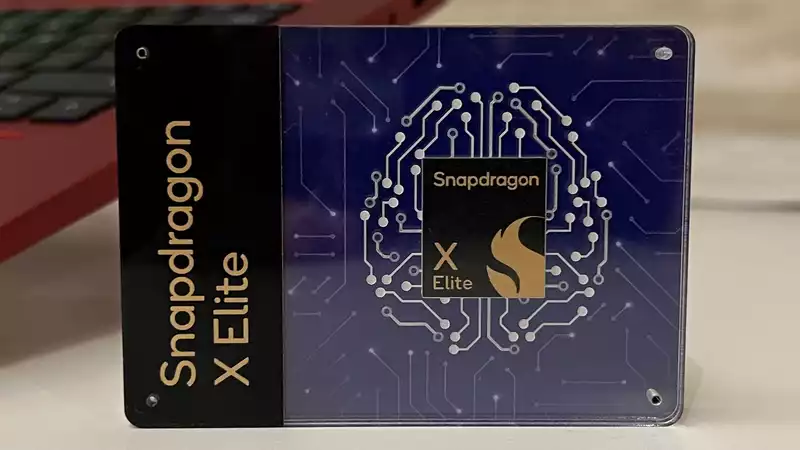Qualcomm's new Snapdragon X Elite chip is shaking up the computing world. This mobile CPU is designed for laptops and promises to be significantly more powerful than chips produced by Intel, AMD, and Apple. If Qualcomm's claims are true, the X Elite chip could be the next big thing for the best laptops.
I attended the Snapdragon X Elite benchmark session at this year's Snapdragon Summit. While we were not able to do our own benchmarking, Qualcomm's controlled demo gave us an idea of what the company's mobile CPUs can do. The session also showed how the X Elite's benchmark results compare to its rivals.
How well does the Snapdragon X Elite compare to processors from Intel, AMD, and Apple? For more information, click here.
Snapdragon X Elite is manufactured in the same 4nm process as the new Snapdragon 8 Gen 3. Snapdragon X Elite has 12 high-performance cores that deliver 3.8GHz (up to 4.3GHz for dual-core) CPU memory architecture with up to 136 GB/s of bandwidth and a 42 MB total cache.
Qualcomm performed Snapdragon X Elite benchmarks on two notebook reference designs. The first configuration (Config A) device had a 15.6" (3,840 x 2,160) display with a maximum TDP (thermal design power) of 80W and a battery of 87 Wh. The second model (Config B) had a 14.5" (2,880 x 1,800) display and had a TDP of 23 W and a 58 Wh battery.
We were provided with a variety of benchmark results. However, for the purposes of this article, we will focus on Geekbench 6 and 3D Mark Wildlife Extreme results. Qualcomm provided devices running on Linux and Windows 11, but we will stick to the latter to make it easier to compare the X Elite's numbers with the best Windows laptops.
In our Geekbench 6 multi-core CPU performance test, the Snapdragon X Elite reference devices (Config A and Config B) scored 15,130 and 14,000 respectively. These numbers not only beat the Apple M2 chip in the 13-inch MacBook Pro M2 we tested (8,911), but are also comparable to the 14-inch MacBook Pro M2 Pro (14,965) and M2 Max (14,939) models that we benchmarked.
For reference, the 13-inch M2 MacBook Pro we reviewed ($1,199) has a 1TB SSD, 16GB of RAM, and an M2 chip with an 8-core CPU and 10-core GPU; the M2 Pro version of the MacBook Pro 2023 (3, 299) has a 12-core CPU, 19-core GPU, 32GB of RAM, and 2TB, while the M2 Max ($4,099) has a 12-core CPU, 38-core GPU, 64GB of memory, and 2TB of storage.
Qualcomm's graph compares the X Elite's performance to a 13th generation Intel Core i7-13800H CPU. According to Qualcomm, the performance of this Intel chip is in the middle of the two Snapdragon reference devices. The Dell XPS 15 OLED (2023) we tested has a Core i7-13700H CPU, which scored 12,171 points in the multi-core test. This result is comparable to other laptops we tested with the Core i7-13700H. If accurate, the X Elite crushes this Core i7 chip.
3DMark Wild Life Extreme measures graphics performance and displays the overall score and frame rate (fps); it is not available for Windows, so this is a Mac-only comparison. This test displays both scores and frame rates. Qualcomm does not disclose scores, so we will stick to the fps (frames per second) results here.
In this test, the Snapdragon X Elite achieved 44.5 fps on Config A and 38.5 fps on Config B. In our tests, the M2-powered MacBook Pro 13-inch recorded 40.5 fps, matching Qualcomm's results.
What about the M2 Pro and M2 Max: The M2 Pro in the MacBook Pro 14-inch achieved 73 frames per second, while the M2 Max chip recorded 80 frames per second. Apple's more powerful M2 chip outputs nearly twice as many frames per second as the X Elite.
The Snapdragon X Elite boasts impressive specs, based on Qualcomm's calculations. If this upcoming processor lives up to the hype, it could be huge - especially if its AI capabilities improve the user experience. I am excited about the Snapdragon X Elite, but have one major concern.
Devices with the X Elite will not appear until mid-2024. This is unfortunate given that Apple's M3 chip was just announced. Even if the X Elite beats the M2 in our tests, the M3 may already be well ahead of Qualcomm's promising processor. Besides, Nvidia and AMD plan to release their own PC chips by 2025. And let's not forget that the first batch of Intel Raptor Lake Refresh CPUs are available now. Qualcomm chips are certainly entering a crowded market.
MacBooks with M3 chips may make us forget about the Snapdragon X Elite. But if the benchmarks we run next year match Qualcomm's numbers, we'll consider that a win.
.









Comments